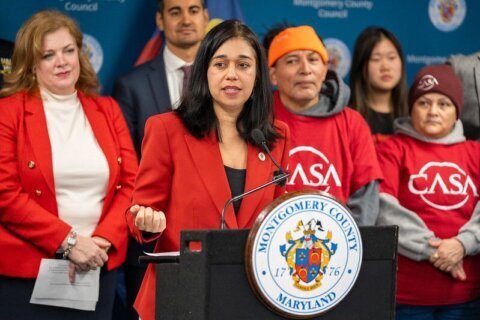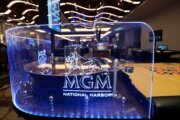This article was republished with permission from WTOP’s news partners at Maryland Matters. Sign up for Maryland Matters’ free email subscription today.
This content was republished with permission from WTOP’s news partners at Maryland Matters. Sign up for Maryland Matters’ free email subscription today.
Maryland hospitals are now able to acquire personal protective equipment for their employees thanks to a global increase in production capacity. But they are paying exorbitant prices, a hospitals association executive told the General Assembly on Tuesday.
Hospitals, doctors offices and governments at every level have been in a mad scramble for weeks to acquire gowns, masks, face shields and gloves to protect employees from — and reduce the spread of — COVID-19. Global shortages and profiteering forced up prices as medical providers competed for scarce critical supplies.
“Now hospitals have access to the supplies that they need, but the pricing is still very high,” said Bob Atlas, president of the Maryland Hospital Association. “And of course the velocity of consumption is higher because of the need to contain the spread of the infection.”
Atlas said one Maryland hospital that spent $600,000 on PPE last year expects to spend $10 million this year. He did not name the facility.
Atlas said the state’s anti-price gouging law is of no help because items are being procured from all over.
“Most of this purchasing is happening outside the state,” he told the House Health and Government Operations Committee. “The supply chain is worldwide and it’s a mess. It was really awful just a month or so ago.”
As the coronavirus caseload mounted, hospital procurement personnel started to panic. And Gov. Lawrence J. Hogan Jr. (R) told top aides, “We’re not going to end up like Italy,” one of several European nations where supplies ran out and medical workers were forced to wear trash bags as substitute gowns.
The situation got so dire that LifeBridge Health began to manufacture their own items, Leslie Simmons, the president of Carroll Hospital, told the panel.
“I never imagined that I would be opening a manufacturing plant,” she said. Furloughed employees were brought back and LifeBridge purchased 70 sewing machines from Amazon.
“We started sewing our own gowns, which we were desperately in need of, and producing face masks and face shields.”
Now that the global supply chain has caught up to demand, LifeBridge has begun to stockpile “large amounts of PPE” in preparation for a possible second wave of COVID-19 in the fall.
“We produced a tremendous amount of gowns, over 100,000 face masks. We have face shields to last a year. And we still are fine-tuning any appropriate conservation methods, so we don’t burn through PPE at an unreasonable rate,” she said.
Atlas urged lawmakers to spread the word among their constituents about the continuing threat that COVID-19 poses.
“We still have a pandemic,” he said. “We are learning how to live with that in some respects. We don’t have a vaccine. We don’t have a true treatment. So we need to continue to maintain real preparedness and readiness.”







